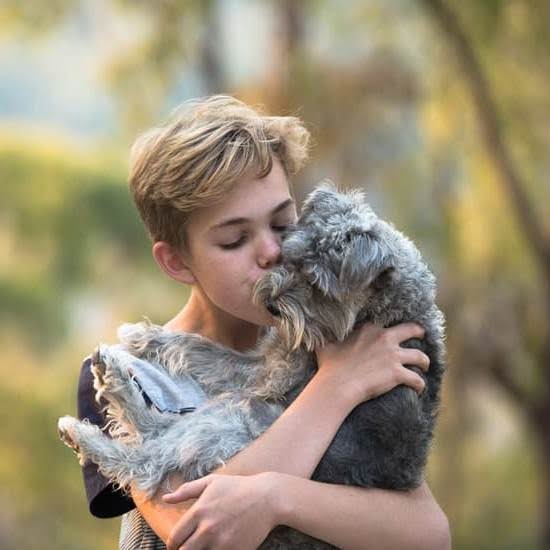Are you looking to enhance your communication with your furry companion? Learn how to dog whistle train to effectively communicate and train your dog using specific cues and commands. Dog whistle training is a popular method that can help improve obedience, recall, and overall behavior in your pet. By understanding the basics of dog whistles and following a step-by-step guide, you can establish a strong connection with your canine friend.
Dog whistle training involves using a specialized tool that emits sound at frequencies only dogs can hear. This method is particularly useful for long-distance communication, as the sound can travel further than verbal commands. Choosing the right dog whistle is crucial for successful training, as different frequencies suit individual dogs better. Understanding how to properly introduce the whistle and associate it with specific actions is key to effective training sessions.
In this article, we will cover everything you need to know about dog whistle training, from selecting the right equipment to troubleshooting common challenges. By following our tips and tricks, you’ll be able to fine-tune your dog’s response to whistle commands and build a stronger bond with your pet through this unique form of training. Get ready to embark on an exciting journey towards better communication and cooperation with your four-legged friend through dog whistle training.
Understanding the Basics of Dog Whistles and Their Use in Training
Dog whistles are a valuable tool in training your dog, especially when it comes to long-distance commands or improving response time. These unique tools emit a high-pitched sound that is often inaudible to humans but can be heard by dogs, making them excellent for training purposes. Understanding the basics of dog whistle training is essential to ensure effective communication with your pet.
To start with, let’s delve into the key points about dog whistles and their usage in training:
- Frequency: Dog whistles typically produce sound frequencies ranging from 23 kHz to 54 kHz, well above the human hearing range.
- Distance: The sound produced by a dog whistle can travel further distances than verbal commands, making it ideal for recall training in open spaces.
- Consistency: Dog whistles provide consistent sounds each time they are blown, helping to eliminate variations in tone or volume that may occur with verbal cues.
When choosing a dog whistle for your pet, consider factors such as frequency range and material. Some common types include metal whistles and plastic whistles, each with its own advantages. It’s important to select a whistle that is comfortable for you to use and produces a clear, consistent sound that your dog can easily recognize. With the right whistle in hand, you can now move forward with learning how to effectively train your furry companion using this tool.
Step-by-Step Guide on How to Start Dog Whistle Training
Now that you have a better understanding of the basics of dog whistles and their importance in training, it’s time to embark on the practical aspect of incorporating them into your training routine. Here’s a step-by-step guide on how to effectively start dog whistle training:
- Introduce the Whistle: Begin by getting your dog familiar with the sound of the whistle without associating it with any specific command.
- Associate Commands: Pair specific whistle patterns with basic commands like sit or come. Use treats as positive reinforcement when your dog responds correctly.
- Practice Consistently: Practice short training sessions daily to reinforce whistle commands and maintain consistency in your communication.
By following these steps and being patient with your furry friend, you can successfully transition into using dog whistles as an effective training tool for better communication and obedience.
Choosing the Right Dog Whistle for Your Pet
When it comes to dog whistle training, selecting the right whistle for your pet is crucial. There are different types of dog whistles available in the market, each serving a specific purpose. The most common ones are silent whistles, adjustable frequency whistles, and whistle clickers.
Silent whistles produce high-frequency sounds that are not audible to humans but can be heard by dogs. Adjustable frequency whistles allow you to customize the pitch of the sound, making it suitable for various breeds and distances. Whistle clickers combine a whistle with a clicker for more precise training.
To determine which dog whistle is best suited for your pet, consider factors such as breed, age, and training needs. For example, some breeds respond better to higher frequencies, while others may require a louder sound. Additionally, puppies and older dogs may have different hearing capabilities that should be taken into account when choosing a whistle. It’s also essential to select a whistle that is comfortable to hold and easy to use during training sessions.
In order to ensure successful training outcomes, take the time to test different types of dog whistles with your pet before committing to one. Observe how your dog responds to each whistle and choose the one that elicits the most positive reactions.
Remember that consistency is key when implementing any training method, including dog whistle training. By selecting the right whistle for your furry friend, you’ll be setting yourself up for effective communication and enhanced bonding through this unique form of training.
| Types of Dog Whistles | Key Features |
|---|---|
| Silent Whistles | Produce high-frequency sounds only audible to dogs |
| Adjustable Frequency Whistles | Allow customization of pitch suitable for various breeds |
| Whistle Clickers | Combine a whistle with a clicker for precise training |
Step-by-Step Guide on How to Start Dog Whistle Training
Dog whistle training can be a valuable tool in teaching your furry friend commands and behaviors. However, it is important to understand how to properly use a dog whistle and effectively incorporate it into your training routine. Here is a step-by-step guide on how to start dog whistle training:
1. Choose the Right Whistle: Selecting the appropriate dog whistle for your pet is crucial. There are different frequencies and designs available, so make sure to choose one that suits your dog’s hearing range and preferences. Some whistles are adjustable, allowing you to find the perfect frequency for your pup.
2. Introduce the Whistle: Before starting any training session, introduce the whistle to your dog in a positive manner. Let them sniff and explore it while associating the sound with treats or praise. This will help create a positive association with the whistle.
3. Start Simple Commands: Begin with basic commands that your dog already knows, such as sit or come. Use the whistle as a cue before giving the command verbally. For example, blow the whistle followed by saying “sit” when they do so successfully, reward them with treats and praise.
4. Consistency is Key: Consistency is crucial in dog whistle training. Make sure to use the same command and whistle signal each time to avoid confusion for your pet. Practice regularly in short sessions to reinforce learning.
5. Gradually Increase Difficulty: As your dog becomes more familiar with the whistle commands, you can gradually introduce more advanced behaviors or longer distances between you and your pet when using the whistle cues.
By following these steps and being patient and consistent, you can effectively train your dog using a whistle and strengthen your bond through positive reinforcement techniques. Remember that each dog is unique, so adjust your training approach based on their individual needs and progress levels.
Tips and Tricks for Effective Dog Whistle Training Sessions
Dog whistle training can be a highly effective way to communicate with your furry friend, but it requires some tips and tricks to ensure successful sessions. One important tip is to start slow and be patient with your dog. Just like any form of training, consistency is key, so make sure to practice regularly and reward your pet for their progress. Additionally, keep training sessions short and engaging to maintain your dog’s interest and focus.
Another helpful tip for effective dog whistle training is to use positive reinforcement. When your dog responds correctly to a whistle command, reward them with a treat or praise to reinforce the behavior. This creates a positive association with the whistle sound and encourages your dog to continue obeying commands. Remember that patience and positivity are essential when training your pet using a whistle.
In addition, it’s crucial to find the right balance between consistency and flexibility in your training approach. While it’s important to establish clear rules and boundaries during sessions, be open to adjusting your methods based on your dog’s individual needs and responses.
Every pet is unique, so pay attention to how your furry companion reacts to different techniques and tailor your training accordingly. By being adaptable and observant, you can effectively build a stronger bond with your dog through whistle training.
| Tips for Effective Dog Whistle Training | Details |
|---|---|
| Start Slow | Practice consistently but patiently with short sessions |
| Use Positive Reinforcement | Reward correct responses with treats or praise |
| Be Consistent yet Flexible | Establish clear rules while adapting to individual needs |
Common Mistakes to Avoid When Dog Whistle Training
When embarking on the journey of dog whistle training, there are several common mistakes that pet owners should be aware of in order to ensure the effectiveness of their training sessions. One of the most common mistakes is using the wrong frequency or pitch on the dog whistle.
Each dog whistle has a specific frequency range that is effective for different breeds and individual dogs. It is essential to test out different frequencies to determine which one elicits the best response from your furry friend.
Another mistake to avoid is inconsistent timing and reinforcement during training sessions. Consistency is key when it comes to dog whistle training. Make sure to use the whistle command at the same time each session and follow up with praise or treats immediately after your dog follows the command. This reinforces positive behavior and helps your pet understand what is expected of them.
Additionally, a common mistake many pet owners make during dog whistle training is expecting immediate results. Training takes time, patience, and consistency. It is important to set realistic expectations for your pet’s progress and celebrate small victories along the way.
Remember that every dog learns at their own pace, so be patient and persistent in your efforts to communicate effectively with your furry companion through whistle commands. By avoiding these common mistakes and staying dedicated to your training regimen, you can build a strong bond with your dog and improve their obedience through whistle training.
Troubleshooting
Identifying Challenges
When it comes to dog whistle training, challenges can arise that may hinder the progress of your pet’s training. One common challenge is the inability of some dogs to hear or respond to the whistle due to hearing impairments or age-related issues.
Another challenge could be distractions in the environment, such as noises or other animals, that may divert your dog’s attention away from the whistle commands. Furthermore, some dogs may simply not understand what is expected of them when they hear the whistle.
Strategies for Overcoming Challenges
To address these challenges, it is important to first ensure that your dog does not have any hearing issues that are preventing them from hearing the whistle. Consulting with a veterinarian can help rule out any underlying medical conditions.
In cases where distractions are a problem, consider practicing in a quiet and controlled environment before gradually introducing more distractions. Additionally, if your dog is not responding to the whistle commands, try using high-value treats as positive reinforcement to encourage them to follow the commands.
Persistence and Patience
It’s essential to remember that every dog is unique and will progress at their own pace when it comes to whistle training. Patience and consistency are key when facing challenges during training sessions. Avoid getting frustrated if your dog doesn’t immediately grasp the concept of responding to the whistle. By staying persistent and patient, you can work through challenges with time and practice, ultimately strengthening the bond between you and your furry companion through successful whistle training sessions.
Advanced Techniques for Fine-Tuning Your Dog’s Response to Whistle Commands
Teaching Different Commands
Once your dog has mastered the basic commands with the whistle, you can start teaching more advanced commands. You can use different sequences of whistle blows to represent different actions or behaviors you want your dog to perform. For example, one short burst followed by a long blow could signal for your dog to return to you immediately, while two short bursts could indicate that it’s time to stop and sit down.
Adding Distractions
To further fine-tune your dog’s response to whistle commands, practice in different environments with varying levels of distractions. Start in a quiet room and gradually introduce more distractions such as toys, other pets, or people walking by. This will help reinforce your dog’s ability to focus on the whistle commands despite outside stimuli, ensuring a reliable response in any situation.
Implementing Variable Rewards
To keep your dog motivated and engaged during whistle training, consider implementing variable rewards based on their performance. Sometimes offer a high-value treat for quick and accurate responses to whistle commands, while other times provide verbal praise or a favorite toy. By mixing up the rewards, you can create anticipation and excitement in your dog, making the training process more enjoyable for both of you.
By incorporating these advanced techniques into your dog whistle training sessions, you can enhance your pet’s responsiveness and obedience. Consistent practice and patience are key to achieving success in fine-tuning your dog’s response to whistle commands. Remember that every dog learns at their own pace, so be patient and understanding throughout the training process. Celebrate small victories along the way and continue building a stronger bond with your furry friend through effective communication using the whistle.
Conclusion
In conclusion, dog whistle training can be a highly effective method for communicating with your pet and strengthening your bond. By using the right techniques and consistency, you can achieve great results in training your dog to respond to whistle commands. This form of training not only enhances obedience but also fosters a deeper connection between you and your furry companion.
While mastering how to dog whistle train may take time and patience, the rewards are well worth the effort. Celebrate every small success along the way as you progress through each step of the training process. Remember that building a strong relationship with your dog is about more than just commands; it’s about trust, communication, and mutual understanding.
As you continue on this journey of whistle training with your dog, remember to stay positive, patient, and persistent. Each pet is unique, so adjust your approach as needed to suit their personality and learning style. With dedication and love, you’ll not only achieve success in training but also create a lasting bond that will benefit both you and your beloved canine companion for years to come.
Frequently Asked Questions
Is Whistle Training Good for Dogs?
Whistle training can be very effective for dogs as it provides a clear, consistent sound that can help with communication and reinforcement. It can be especially useful for long-distance commands or for dogs with hearing impairments, as they can easily pick up on the distinct sound of the whistle.
How Do You Start a Dog Whistle Training?
To start dog whistle training, it’s important to choose a specific frequency for your whistle that your dog will respond to best. Begin by associating the sound of the whistle with something positive, such as treats or praise.
Then, use the whistle to signal basic commands like sit or come, rewarding your dog when they respond correctly. Consistency is key in establishing this form of communication with your pet.
What Are the Dog Whistle Commands?
The key to successful dog whistle commands is consistency and repetition. Start with simple commands like sit or come, using the whistle as a cue instead of verbal communication.
Over time, you can introduce more advanced commands using the same method. Remember to always reward your dog for responding correctly to the whistle commands to reinforce their behavior and strengthen the training process.

Welcome to the blog! I am a professional dog trainer and have been working with dogs for many years. In this blog, I will be discussing various topics related to dog training, including tips, tricks, and advice. I hope you find this information helpful and informative. Thanks for reading!





